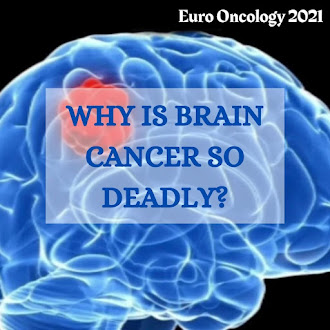Why is brain cancer so deadly?
Glioblastoma, probably
the deadliest type of cerebrum disease, may have discovered its foe. New
exploration shows that the tumor, which is famously hard to treat, can be ended
by an exploratory compound. Glioblastoma is an especially forceful type of mind
tumor, with a middle endurance pace of 10–12 trusted Source months. Part of the
motivation behind why glioblastomas are so destructive is that they emerge from
a sort of synapse called astrocytes. These phones are molded like a star, so
when the tumors
structure them foster limbs, which make them hard to eliminate precisely.
Furthermore, the tumors advance quickly. This is on the grounds that astrocytes
offer help to neurons and control the measure of blood that contacts them;
along these lines, when tumors structure, they approach countless veins,
assisting malignant cells with developing and spread rapidly. Another
explanation that glioblastomas
are so hard to treat is their high pace of repeat. This is incompletely because
of a subpopulation of cells contained in the tumor called glioma foundational
microorganisms (GSC) a sort of self-recovering disease undifferentiated
organism that controls the development of tumors. Past research utilizing a Drosophila
fly model of cerebrum tumors led by Mukherjee and group uncovered that quieting
the quality that encodes CDK5 diminished tumor size and the quantity of GSCs.
Further hereditary separating people with glioblastoma uncovered that these
individuals likewise had significant levels of the CDK5 protein.
Symptoms of brain tumor:
- Irritability, drowsiness, apathy or
forgetfulness.
- Numbness or tingling in the arms or
legs.
- Dizziness.
- Partial loss of vision or hearing.
- Hallucinations, depression or mood
swings.
- Personality changes, including abnormal
and uncharacteristic behavior.
The specialists additionally tried the adequacy of this catalyst blocker on the three primary subtypes of glioblastoma: the neural, exemplary, and mesenchymal subtypes. Of these, the last subtype was displayed to have lower levels of CDK5, so later on; this new methodology may not profit patients with mesenchymal glioblastoma as altogether. The death rate for glioblastoma has just tolerably changed in most recent 30 years," he says. The current medication, temozolomide, is fairly compelling when the tumor repeats and one of the serious issues with glioblastomas is they will in general return. In any case, utilizing the CDK5 inhibitor in blend with this chemotherapy medication may prevent tumor development and prevent them from returning. The thought is to kill the leftovers and glioma foundational microorganisms after chemotherapy. Those are the cells that continue and cause repeat.




Comments
Post a Comment